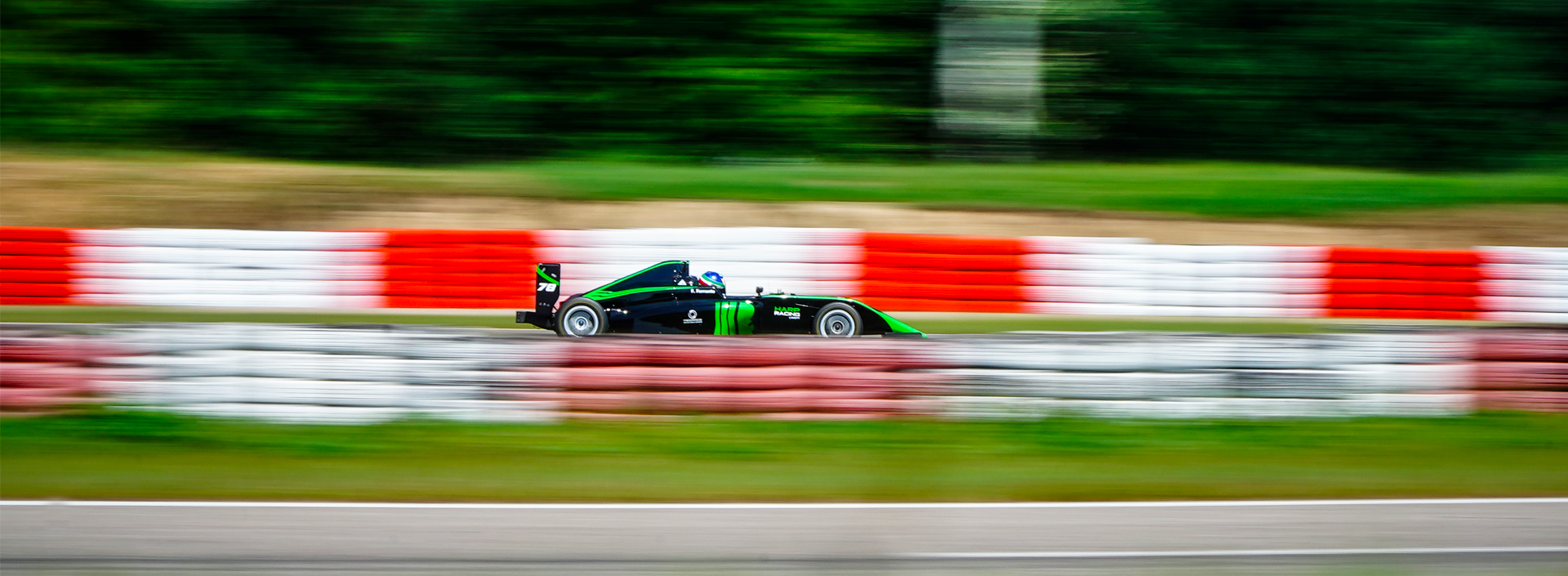
Many partners, many data: how to understand a car behaviour.
Skydrive has run a test on a Tatuus F4 T014 single seater car fully instrumented by Skydrive-Master UNIPV-Harp-ASC, in order to better understand car’s and tyre’s behaviour.
PART 1
First of all, thanks are due to all the players involved, starting with the ASC track at Vairano and the Harp Racing team, then Kistler Italia for their collaboration and the use of special sensors, as well as Izze Racing, and Megaride for their support and sharing of know-how, not forgetting the driver, Alessio Rovera.
Now, let’s talk about the track session!
There is a common way of saying in motor racing: the stopwatch is the ultimate judge of all things,the only thing that counts.
The great truth hidden beneath this aphorism is that the heart of motorsport is made of numbers. Of DATA.
A racing car, in the eyes of an engineer, is little more than a system of moving, interrelated and constantly evolving data.
In fact you can really “translate” a vehicle in data, but is not so easy.
Translating the real vehicle into reliable and certain data is a delicate, difficult and demanding job.
It is a delicate job because the measurement chain and method make the difference avoiding wrong data collection that may invalidate all the work of the engineers.
It is a difficult job because it requires a specific and deep preparation starting from positioning and calibrating the sensors on the car, managing the quality of the signals and processing the data collected.
It is a demanding job because the instrumentation with which to equip the car is
expensive and, theoretically, the greater the economic investment, the better the measurements; but exploitation of car, professional driver, sensors, circuit, track time are the key of this activity and they are also a resource-intensive undertaking.

THE TEST SESSION
On 15 May 2023 Skydrive and HARP and the Master in Race Engineering at the University of Pavia organised a test session at the partner ASC track in Vairano with the aim of acquiring reliable data on the car’s dynamic behaviour, and, above all, on tyre characteristic, during qualifying, long runs and in specific driving manoeuvres.
For this purpose, the car was fully instrumented.
We have focused primarily on the tyre.
The tyre is still THE great unknown of the vehicle system: while the body of the car responds to the most elementary rules of Newtonian physics, the tyre is a highly complex system in which dozens of variables relating to viscosity, temperature, grip, etc… interact.
And it is also the crucial point of the car’s entire dynamic system: it is the point of contact with the ground, the one that ultimately determines grip during cornering, acceleration and braking.
THE CAR AND INSTRUMENTATION
The chosen car is a Tatuus F4-T014 made available, as mentioned, by the Harp Racing team, entrusted to the skilful care of Alessio Rovera, two-time WEC champion in GTE and LMP2 Pro-Am and winner at Le Mans in GTE Pro-Am.
The day, fortunately clear and dry in a very rainy May, allowed the team to fully respect the time schedule as planned, managing to carry out a very precise series of tests and measurements.
First of all, let’s examine the instrumentation used:
- 4 HS-TTPMS (high speed tire and temperature monitoring system) to measure the tire inner-liner temperature and pressure;
- 1 Kistler Correvit-S Motion for the slip-free measurement of longitudinal and transverse speed
- 4 Push rods instrumented with strain gauges (0-1000kg) to measure the tire load.
- 2 Laser sensors (0.1mm accuracy) for ride high measurement
- 2 IR 4 spot sensors for tire surface temperature
- GPS at 25Hz frequency (accuracy <0.4 mt)
- IMU for tri-axial accelerations (+/- 5G) and a tri-axial gyro
- 4 Miniature linear potentiometers DIA 9,5 x 75mm to detect the damper displacement

As can easily be deduced from the number and type of sensors, very rarely a F4 has been live measured so deeply in all the dynamic behaviours on track.
In addition, special attention is paid to the thermal characteristic’s of various elements of the tyre, from its surface temperature to the rim temperature, to understand the heat generation and transfer.
From the hysteretic heat generated by the frequency to the friction heating with the asphalt from the convective heat exchanged with air to the conductive heat loss or transfer from the rim, and from the radiative heat loss to the ambient and gain from the brake… including the measurment of the tyre’s inner body.
We have also pushed the frequency limit as far as possible in order to acquire the most
precise and accurate data, especially on certain phenomena that are crucial in the mathematical definition of the car and tyre.
